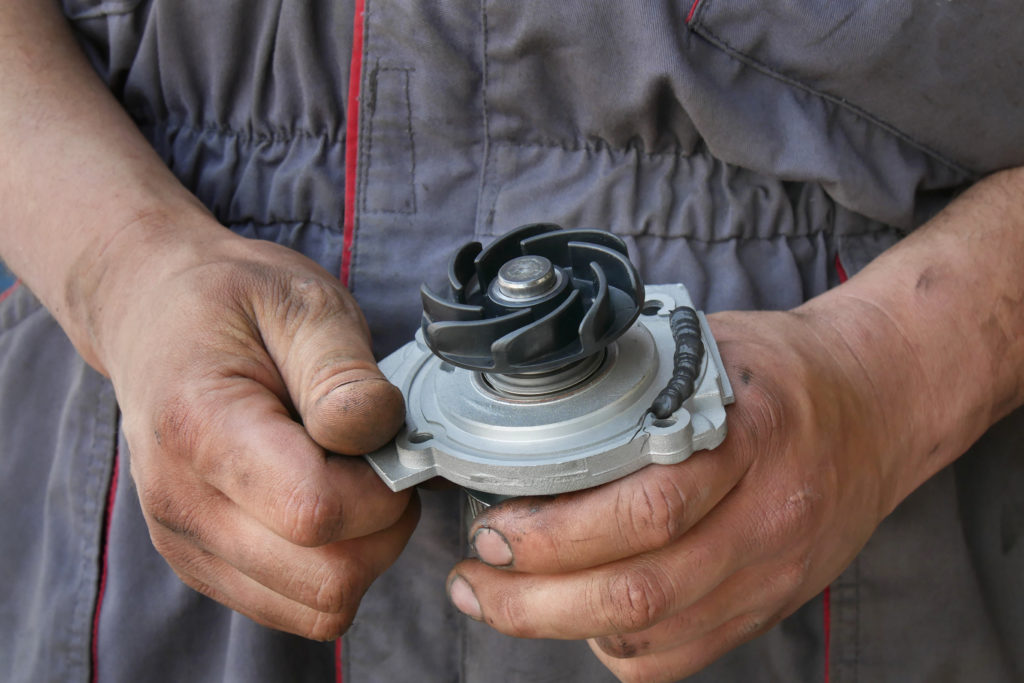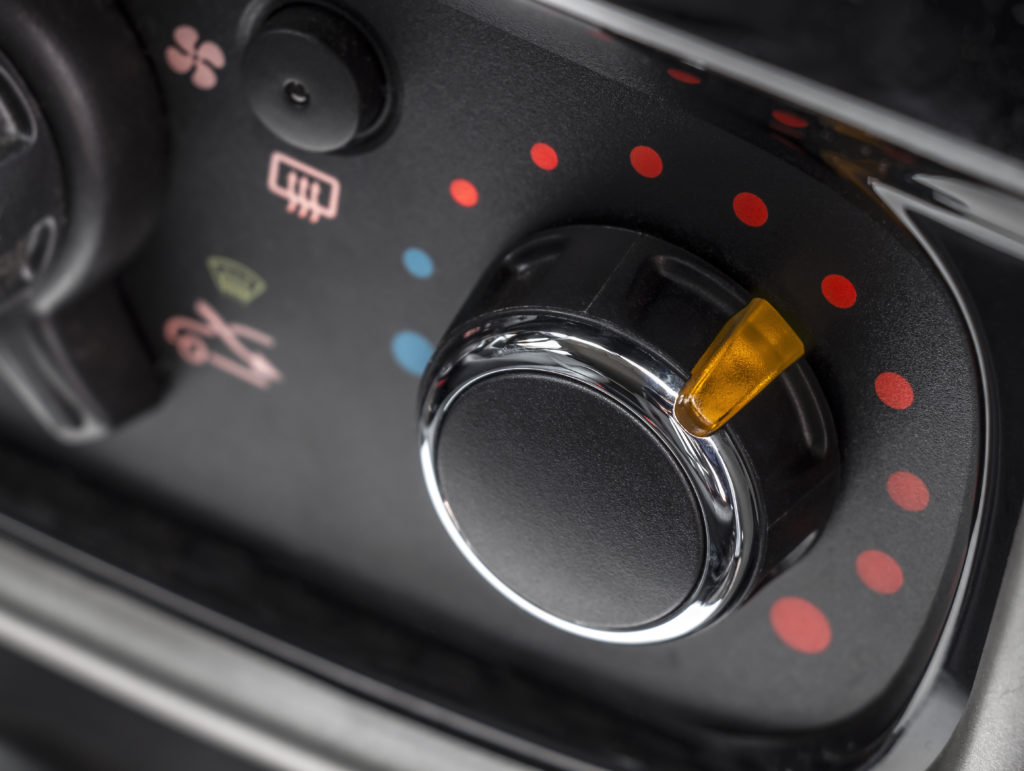Your car’s water pump is a fairly simple device—but it has an important job to do. As its name implies, the water pump “pumps” a coolant mixture through the vehicle’s cooling system. If it weren’t for the water pump, your car’s engine would quickly overheat.
Although the water pump is designed to last the life of the vehicle, that doesn’t always happen. The pump may start to leak, its bearings may go bad, or its impeller may wear away from corrosion. Any of these issues will cause the pump to fail prematurely, resulting in noticeable symptoms.

Bad Water Pump Symptoms
A faulty water pump can cause several issues. If you’re concerned that your water pump may be on it’s way out, these are the primary symptoms to watch out for:
Engine Overheating
A water pump can develop leaks—and that can lead to a low coolant level and engine overheating. Also, a water pump that has failed internally will impede coolant circulation, causing the engine to overheat. Either scenario is bad news.
Coolant Leaks
Leaks are a very common problem with water pumps. The leaks may originate from the water pump itself or the pump’s gasket.

Illuminated Warning Lights
If your car’s water pump goes out, one or more warning lights may pop up on the dash. For example, you may see the low coolant warning, overheat warning, or a check engine light. The temperature gauge (if your car has one) will climb, as well.
Abnormal Noise
In some cases, the water pump’s bearings may start to fail, resulting in an audible whining or growling noise when the engine is running.
Heater Doesn’t Work
Your car’s heater requires hot engine coolant to operate properly. As such, a problem with the cooling system, such as a bad water pump, can lead to an inoperative heater.

Oil-Coolant Intermix (Chain-Driven Water Pumps Only)
On some vehicles, the water pump is driven off the timing chain inside the engine. When the pump or its gasket fails, the resulting leaks can cause coolant to mix with the oil inside of the engine. This is a common problem on the Ford 3.5L and 3.7L EcoBoost V6 engines.
Water Pump Diagnosis
There might be instances where the symptoms aren’t as evident as they should be, forcing you to pop the hood and see the pump for yourself. If you have doubts about the overall condition of your water pump, here’s what you can do.
First things first一make sure your vehicle is parked and the parking brakes are applied. Once that’s out of the way, remove the radiator cap and start the engine.
Let the engine run for about 20 minutes to let it reach its operating temperature. The coolant should flow to the engine hoses at operating temperature.
If that doesn’t happen, the thermostat might be stuck closed or the radiator is clogged, and the water pump isn’t working.
If the water pump has been identified as the faulty component, replace it with a new one and check for coolant flow.
To do this, force the new pump into the upper radiator hose. Then, check if coolant is rushing out of the pump after clearing the radiator from blockage.
If coolant isn’t coming out, try squeezing the upper radiator hose while someone steps on the accelerator pedal. Release the hose to check for coolant flow.
When performing this task, it’s also important to consider that the upper radiator hose could be the problem if the coolant fails to circulate.
How Does a Water Pump Work in a Car?
As was mentioned, the water pump forces coolant through the cooling system. The water pump contains an impeller—a circular component with fan-like blades—that rotates on a shaft and bearings.
Most water pumps are driven by the engine’s drive belt, timing belt, or timing chain. When the engine is running, the belt or chain turns the water pump’s pulley, causing the impeller to spin. The impeller draws coolant from the radiator, then pumps that coolant through the engine and heater core.

Although belt-driven water pumps are still common, a growing number of late-model cars now have electric water pumps. Electric pumps are more efficient since they put zero drag on the engine. Because the design doesn’t require a running internal combustion engine, it also works well in hybrid and electric vehicles.
It’s also worth noting that some modern cars have multiple water pumps. Some systems use two or more electric pumps, while others use a combination of mechanical and electric pumps.
Can You Drive Your Car with a Bad Water Pump?
You might be wondering: Can you drive your car with a bad water pump? And the answer is— absolutely not. A failed water pump almost always leads to overheating, which, in turn, can cause extensive engine damage.
Check out this video for tips on how to replace your water pump:
Any information provided on this Website is for informational purposes only and is not intended to replace consultation with a professional mechanic. The accuracy and timeliness of the information may change from the time of publication.































